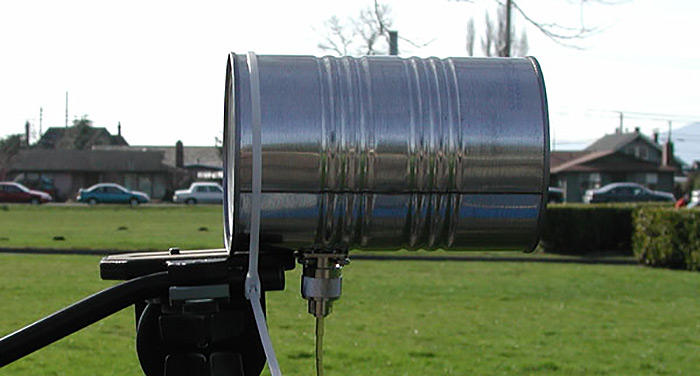Super Cantenna Directional Wi-fi Antenna
Most routers have antennas (which send the signal in all directions except in the direction of the 'stick' - actually some signal even goes a little up there, but the main part goes 'around'). So, no in most cases. If the router is equipped with some kind of, then the direction would matter.
High Gain Directional Wifi Antenna


Some links on the subject: Just one other thing. check it out (courtesy of Molly). It is a wonderful little application for measuring the signal with very nice visualization properties. Lemon easy to use.
How To Make A Tin Can Directional WiFi Antenna to Extend your Communication. Say that a WiFi antenna will be useless. Antenna, or Cantenna.
- Wi-Fi Antennas. Wireless WiFi Network Adapter 150M USB Network Card For PC Laptop Wifi Receiver External Wi-Fi Dongle Antenna. Crane Super USB.
- In most cases we know how to boost a weak WiFi signal to attain the unattainable. The Super USB WiFi Antenna 3 plugs into the USB port. My Super WiFi Antenna.
I have tried moving the aerials, pointing them in different directions however, when it comes down to it, I have personally only seen it improve the signal about half of the time and it is not always noticeable. There is no way to know if it will work with yours in advance, but from my observations, pointing it in a single direction sometimes gives you a tiny (And I mean tiny) better signal if you were right on the edge - I am talking about when moving your laptop a few CM means the difference between a signal and no signal. If you have a fairly descent signal, I have not seen any improvement what so ever for moving an aerial. My guess would be that the benefit of the signal reflecting off of the walls and objects outweighs the benefit of having the aerial pointing directly at you. Every antenna has a radiation pattern associated with it.
If you can visualise your antenna as a light bulb, you can get an idea of how it works. Don t starve pc game. A directional antenna is sort of like a torch, with a reflector behind the bulb to direct the radiated signal in a a particular direction, resulting in a conical radiation pattern. An omnidirectional antenna usually has a pattern that is more like a toroid or doughnut with good coverage all around the horizontal plane, but weaker spots at the top and bottom.
Knowing the type of antenna you have in your device can help you determine whether or not pointing it any direction will help or make things worse. For example, pointing the tip of an omnidirectional antenna to a room that requires good coverage is a bad idea because you are essentially pointing the hole of the doughnut, i.e. The weakest part of the radiation pattern to the room. Hope this helps.